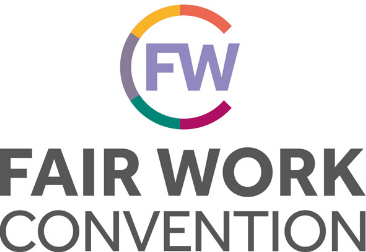The Scottish Government has just published its Anti-Racist Employment Strategy. From a Fair Work perspective, this is undoubtedly a critical issue. But it is also a critical time. For as history has evidenced, when economic and social circumstances are the most difficult, there is a growth in equality, and it is the already disadvantaged groups that suffer most.

It is impossible to imagine how any work practices that disadvantage racialised minorities, either overtly or by systemic and embedded institutional racism, can purport to adhere to any of the principles of Fair Work. Such work practices are simply unable to deliver Effective Voice, Opportunity, Security, Fulfilment and Respect.
The Anti-Racist Employment Strategy is the culmination of a substantial amount of work. Importantly, it was co-created by a Working Group that drew upon the experience and input of the right individuals from the right organisations. The Fair Work Convention as members of the Working Group had a significant contribution. The value of all this is reflected in the comprehensive nature of the published strategy. That the Scottish Government has recognised this and given their endorsement, also demonstrates commitment and leadership from the highest levels.
It is worth picking out one or two of the elements within the strategy that I believe are key to delivering Fair Work in Scotland.
Language is important. Reaching a common understanding of language particularly so. It was recognised early on in drafting the strategy, that people are racialised by society and subsequently experience negative effects because of the different identities that they are assigned. Helpfully, the strategy document contains a comprehensive glossary to aid common understanding. Fear of using the wrong language or lack of understanding is often a significant barrier to employers taking action. I would say it is just as important to focus on intent. The language and understanding will follow, since it becomes part of the journey.
Also, on the topic of language, the strategy makes an important distinction between people who are ‘not racist’ and those who are ‘anti-racist’. The former, through their passiveness, in effect support the unhelpful notion that there is a racial hierarchy. This propagates the status quo, perpetuates the extant inequalities and makes change difficult. Whereas anti-racists, by their activities, support racial equality. This is the very reason that document title is “A Fairer Scotland for All – An Anti-Racist Employment Strategy”.
This leads on to some of the ways that the strategy document can be used to deliver Fair Work and how it can help to address the inequality experienced by racialised minorities.
Employers often have a willingness to make change but do not always have a steer on where to start. My advice is starting somewhere is always better than being passive or deliberating in words only and expecting the action to be taken elsewhere. The refreshed Fair Work Action Plan that accompanies the strategy makes it clear that “Fair Work is an investment in everyone, for everyone”. So, by all means seek the input of racialised minorities within your organisations, but do not, as I find all too often, expect them to also bear the additional burden of owning and delivering race equality. It is not their responsibility. In any case, the chances are that there are too few of them and that very act could provide a get-out clause for the rest of the organisation.
The strategy gives a clear steer to key areas of focus. More specifically, it also has key messages that employers can use to inform their actions. My favourite one being “we need to get comfortable with the uncomfortable”.
One final point. The Anti-Racist Employment Strategy very clearly promotes the taking of an intersectional approach. In that regard it cannot be seen or used in isolation. So, addressing inequalities for racialised minorities also presents a serious opportunity for employers to look at other areas where their employment practices are falling short. As a guide, just look at your employment outcomes for women workers, disabled workers or any other protected characteristic group. How can you simultaneously make work fairer for these groups? Can you, for example, address lack of effective voice? It is well known that collective trade union bargaining provides the most effective voice. If you can address that, you would get an effective voice channel that can deliver Fair Work for everyone.
I firmly believe that if we use this strategy to make strides and address inequalities for racialised minorities, we will see a far more enduring recovery from the current social and economic challenges and build in resilience for the future. Such a recovery will also better deliver on the vision of the Scottish Government, shared by the Fair Work Convention, for people in Scotland to have world-leading working lives where fair work drives success, wellbeing and prosperity for everyone.
